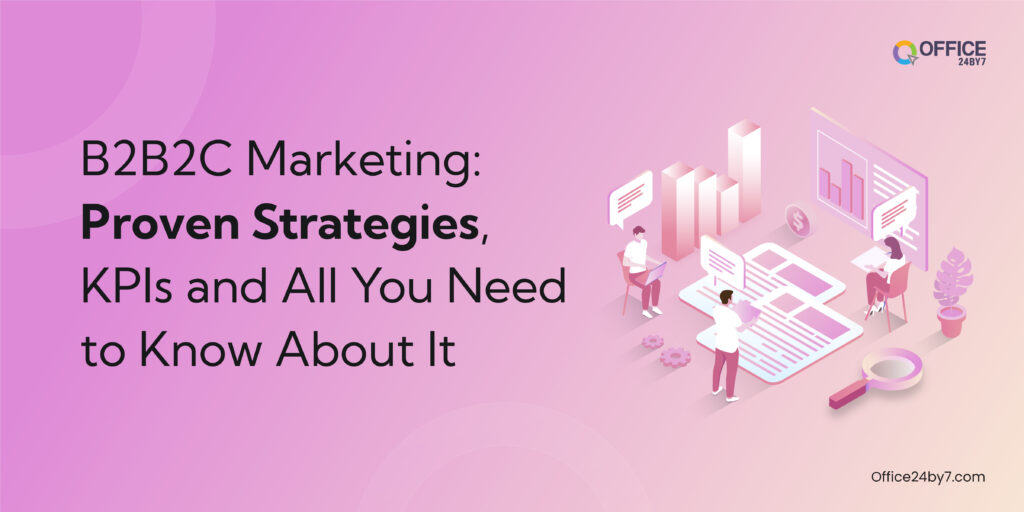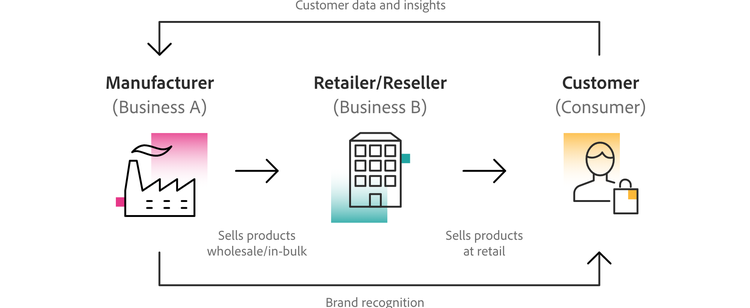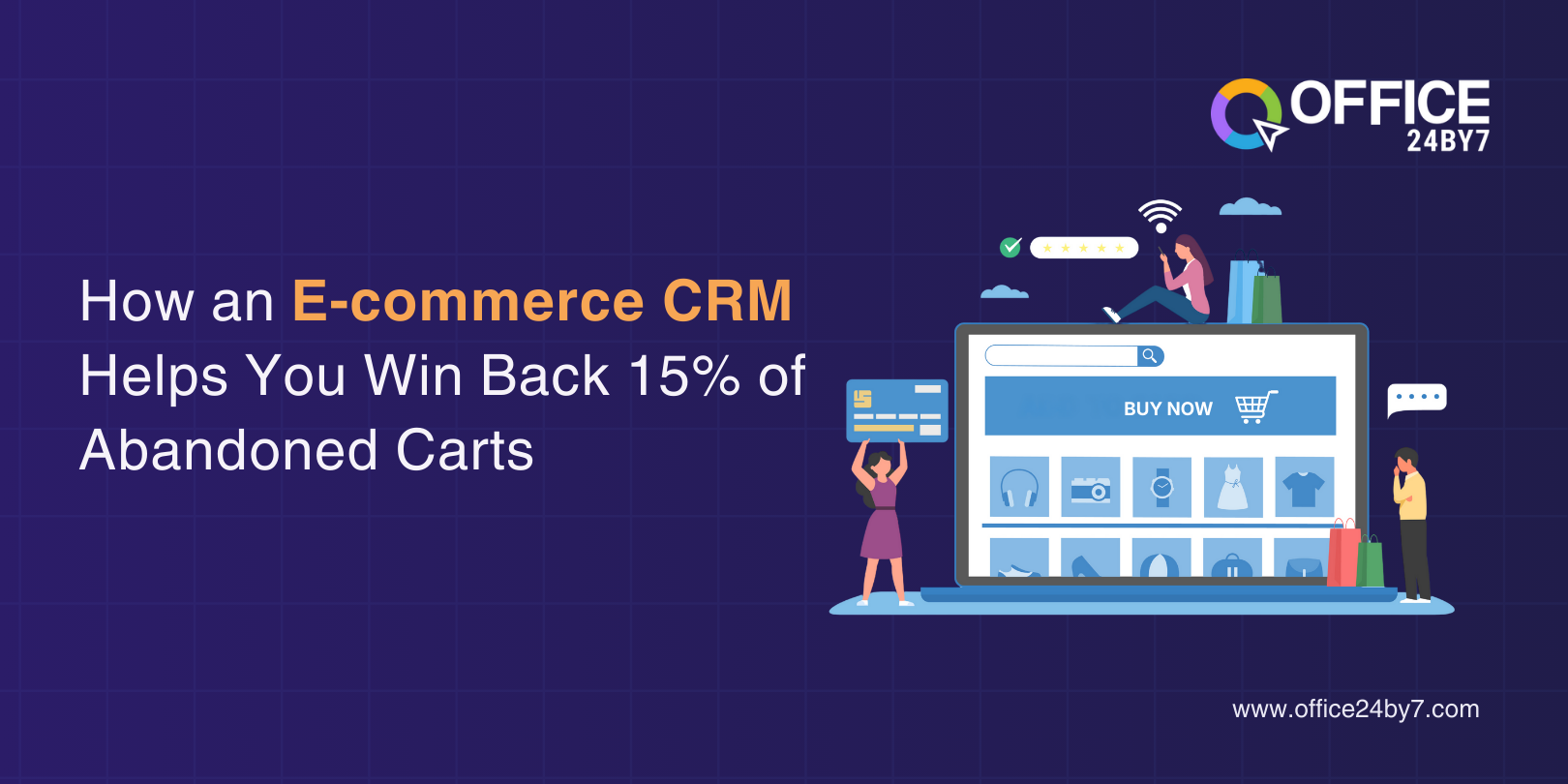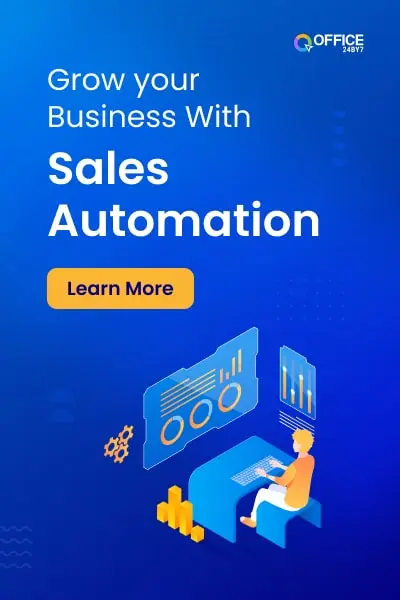
I’m Pranav Mohan, a marketing leader at Office24by7 Technologies, where I manage the complexities of B2B2C marketing on a daily basis. My role involves bridging the gap between our B2B marketing strategies, focused on the companies we serve, and B2C efforts that drive engagement and adoption among the individual employees who are the end users of our solutions.
There are various business models for which we develop marketing strategies. B2B and B2C are the most widely seen and heard business models and marketing strategies. A new form of model B2B2C has evolved out of this in recent times. B2B2C model has been around for ages but its importance has increased in the past couple of years.
For those unfamiliar with this term, B2B2C marketing stands for business-to-business-to-consumer marketing model. It involves a manufacturer who sells its products or services to another business that provides services directly to consumers. This is a very common marketing model and one of its notable examples are Fast Moving Consumer Goods (FMCG) manufacturing.
Consider an FMCG manufacturer who sells to a shopping market franchise or business that resells to consumers. This is one of the easiest models for B2B2C business.
But there is an ongoing disparity and confusion as to what B2B2C marketing caters to which is why we will be looking at this in detail in this blog.
- Why B2B2C Marketing Works
- How does B2B2C Marketing differ from B2B and B2C marketing?
- How Does B2B2C Marketing Work?
- Top 10 Effective B2B2C Marketing Strategies
- Segmenting Audiences for Personalized Promotion
- Partner with Businesses on Co-Marketing Campaigns
- Offer Business Partners Sales Enablement Tools
- Leverage Consumer Testimonials for Business Credibility
- Create Incentives for Both B2B and B2C Levels
- Focus on Consumer-Focused Content for Business Success
- Run Data-Driven Cross-Promotions
- Utilize Multi-Channel Campaigns
- Implement Omnichannel Customer Support
- Measure and Optimize the End-to-End Experience
- Important KPIs to Track for B2B2C Marketing Success
- Wrapping Up
Why B2B2C Marketing Works
As a marketer, I have personally seen B2B2C marketing take many forms and be used in various contexts across industries. Simply put it works on mutually beneficial nature of partnerships which are straightforward. But other times it includes a product manufacturer, a distributor, and a large chain of independent retail businesses around the world.
Whichever be the case, B2B2C marketing strategies follows basic set of principles. Lets look at some of the ways in which B2B2C model is beneficial for businesses.

Shared Benefits for Partnership in Sales
Since in this model, one businesses who has the product depends on another business who has the expertise to sell it or have a good customer base, they both are able to share responsibilities that caters to ones ability making the process easier. And other way around a business with good access customers are able to provide products or services that their customers are expecting or in need of. Thus mutually beneficial.
Shared Benefits for Brand Awareness
Another commonly seen B2B2C marketing strategy is where a manufacturer enters a new market collaborating with an existing top player in the market. For example Austrian automobile manufacturer KTM entered Indian market by collaborating with one of the top players in the motorcycle segment Bajaj Auto.
Similarly, combined efforts at content creation and marketing benefits both businesses help build brand awareness and grow each company’s customer volume.
Increased Access to Consumer Data and Insights
In the above example, the KTM gained more insights and consumer data that allows them to tailor their products which meets the particular requirement of Bajaj Auto’s consumers. This also helps the latter to understand more about the consumer and global trends in requirements that the KTM can bring to the table. Therefore there is a large increase of access to data which helps to rework and improve both companies products.
How does B2B2C Marketing differ from B2B and B2C marketing?
In B2B2C marketing, you are focusing on business and consumer engagement in a single strategy.
In B2B marketing companies focus on operational needs, current painpoints, improved efficiency and ROI of using the products.
In B2C emotional connections, convenience, and user experience are the key.
In B2B2C marketing the approach is more layered. You need to consider what value your product would be for the businesses who sell to their customers. So you need to focus on the values that the customers are looking forward to from whom they purchase meanwhile providing value to that company giving them equal importance.
In simple terms, at Office24by7, we’ve developed our customer support automation solutions with a focus on meeting the expectations of your customers when they purchase your products or services. For instance, customers want their concerns or queries to be addressed based on their urgency. Take our IVR solutions, for example. If you’re a bank using our IVR system, Office24by7 ensures your customers can easily check their account details or raise queries, providing a seamless user experience. This not only improves customer satisfaction but also enhances your bank’s service efficiency—a win-win for both your customers and your bank.
Minimize your work efforts with automations!

How Does B2B2C Marketing Work?
Now that I’ve provided you enough information to understand how B2B2C marketing works and what is benefits are, let me make it more clear to you on how B2B2C marketing works by looking at some real life examples around us.
B2B2C Marketing Example: Frito-Lay
The name Frito-Lay might be a little too much to the untrained eye. But let me rephrase. Lays! Cheetos! Stacy’s! Cracker Jack! Ring a bell? Yes they all belong to Frito-Lay. It is one of the best examples of B2B2C marketing that has been around for ages.
Being one of the largest manufacturers of snacks, Frito-Lay does not sell directly to people who munch them. Customers of companies like Frito-Lay which is an FMCG company is grocery stores, shopping centers and other stores that run businesses around the world. These people have direct access to tonnes of customers.
For example, Reliance Smart Bazaar or 7Eleven are the ones who are intermediary businesses with direct customer interaction. So Frito-Lays considers this opportunity so that they can gain good access to customers. Similarly Frito-Lays products being some of the best in class products are much sought after by these retailers.
One important aspect of B2B2C marketing to remember is that consumers will always be aware of the partnership.
B2B2C Marketing Strategy Example: Uber Eats
Consider a Grubsteak’s restaurant, New York. Obviously they have walk-in customers but they realize their customers donot always have the time to travel to the restaurant and spend time there. Instead they consider reselling their products on services like Uber Eats. This is a modern version of the B2B2C marketing.
Since the restaurant is limited to people who can access their foods the secondary business or the intermediary is the online service provider.
By doing so they can now increase its geographical area of service and sell more than the number of seats they have in the restaurant at the same time not worry about the order tracking or logistics.
B2B2C Marketing Strategy Example: Apple
Apple is a classic example for B2B, B2C and B2B2C marketing models. Apple sells its products to telecommunication companies like Verizon and Croma. They also sell their products directly to customers through Apple Stores. Apart from this they also sells its products on secondary business platforms like Best Buy who then resells it directly to customers.
Apple also provides the App Store, which is a marketplace for software developers who wish to sell their products to users of Apple products like the iPhone which is a B2B2C marketing model. Meanwhile, Apple also sells its own software and platforms, such as Apple Business Manager, directly to business owners, making it a B2B business.
B2B2C Marketing Strategy Example: Amazon
Amazon is a name that is much familiar like Apple or Lays. It is one of the largest B2B2C marketing businesses in the world. Such an e-commerce marketplace which provides excellent warehouse, logistics, and customer support teams all around the globe provides great environment for B2B2C marketing.
Apart from that they also sell their own products on their website which is their B2C model as well as develop and source their software products like AWB to businesses encompassing their B2B model.
This is how B2B2C marketing works in different industries. No matter what industry you cater to you will require a good marketing automation tool in order to pull this off. Office24by7 marketing automation solutions is an entity that provides extensive features which helps you connect and interact with your marketing campaigns to evaluate and control its efficiency. If you have a team of excellent marketers, then a great marketing tool is what stands in your way to success. Get a free trial of Office24by7 marketing tool now itself by filling out the Get a Demo form to the right of this blog.
Now, I will give you detailed information as to how you can use specific B2B2c marketing strategies to help your business.

Related Reading
Top 10 Effective B2B2C Marketing Strategies
From what I’ve seen, the best and most effective B2B2C marketing strategies involve collaboration between businesses in ways that are mutually beneficial there by providing added value for customers.
Here are a few effective B2B2C marketing strategies:
Segmenting Audiences for Personalized Promotion
Understanding the unique needs of both business partners and end consumers is crucial. For the B2B audience, emphasize operational efficiency, scalability, and ROI. For B2C, focus on user experience, product benefits, and emotional appeal. Tailoring messages for these different groups ensures better engagement in B2B2C marketing.
Partner with Businesses on Co-Marketing Campaigns
Co-create marketing campaigns with your business clients that target end customers. Whether it’s joint webinars, case studies, or co-branded advertising, collaboration allows you to leverage each other’s audience and build trust across the B2B2C chain.
Offer Business Partners Sales Enablement Tools
Equip your B2B partners with marketing materials such as product guides, social media templates, and customer FAQs. These tools empower them to effectively promote your product to their consumers, streamlining the message and ensuring consistency.
Leverage Consumer Testimonials for Business Credibility
Positive consumer experiences boost trust and loyalty. Use these testimonials not only for B2C campaigns but also to demonstrate the effectiveness of your solution to business clients, showing how it improves consumer satisfaction and their own bottom line.
Create Incentives for Both B2B and B2C Levels
Implement a two-tiered incentive program that benefits both your business partners and their consumers. For example, offer volume discounts for businesses and promotional discounts for consumers that drive engagement across the entire chain.
Focus on Consumer-Focused Content for Business Success
Provide your business clients with high-quality content that helps them market your product to consumers. This includes instructional videos, usage guides, and case studies that highlight the end-user benefits of your offering, making it easier for businesses to drive adoption.
Run Data-Driven Cross-Promotions
Use analytics to understand consumer behavior, and identify which cross-promotion strategies work best. By using data from your business partners, you can target end users with personalized promotions that drive higher engagement and loyalty.
Utilize Multi-Channel Campaigns
Another great B2B2C marketing strategy is engaging both B2B and B2C audiences across multiple platforms. For B2B, focus on LinkedIn, email marketing, and industry-specific channels. For B2C, use social media, influencer marketing, and content marketing to reach end consumers directly, supporting your business partners’ efforts.
Implement Omnichannel Customer Support
Customer support is a unavoidable factor for great marketing. In B2B2C marketing, ensure seamless customer service across both business and consumer touchpoints. By offering your B2B clients robust customer support options, you help them provide better service to end consumers, improving overall satisfaction and retention rates.
Measure and Optimize the End-to-End Experience
Continuously analyze the performance of your B2B2C marketing campaigns, looking for areas where the business or consumer experience can be improved. Optimize messaging, offers, and support structures to deliver a better overall experience.
Marketing Automation
makes all the difference!

Important KPIs to Track for B2B2C Marketing Success
When it comes to B2B2C marketing, tracking the right key performance indicators (KPIs) is crucial. These metrics will help you understand where your efforts are paying off and where there’s room for optimization. If you’re managing both business partners and end consumers, you’ll need to keep a close eye on KPIs that cover the full scope of your marketing. Let’s break down the top KPIs you should be monitoring:
Customer Acquisition Cost (CAC)
In B2B2C marketing, you’re targeting both businesses and consumers, so it’s essential to track how much you’re spending to acquire each group. Understanding the total cost of acquisition for both segments can guide you in optimizing your marketing budget for better efficiency and more targeted spending.
Customer Lifetime Value (CLTV)
This KPI is all about the long game. CLTV measures the total revenue you expect to generate from a business partner or consumer throughout their relationship with your company. A high CLTV shows that your customers are sticking around, satisfied, and bringing in revenue over time—key indicators of a healthy B2B2C strategy.
B2B Partner Retention Rate
How many of your business partners continue working with you over time? High retention means your solution is delivering consistent value to both businesses and their end customers. This KPI is crucial because retaining partners is often more cost-effective than constantly acquiring new ones.
End-Consumer Satisfaction Score
Consumer satisfaction plays a significant role in how your business partners perceive your value. If their customers are happy, your B2B clients will be too. Use tools like surveys, Net Promoter Score (NPS), and online reviews to assess how satisfied consumers are with your product or service. Their satisfaction directly impacts your B2B relationships.
Conversion Rate
This is a dual-layer KPI that applies to both your business partners and their consumers. On the B2B side, track how many of your prospects convert into clients. On the B2C side, measure how many consumers adopt your product or service through your business partners. This provides insight into the effectiveness of your overall marketing funnel.
Revenue Growth per Business Partner
How much revenue are your business partners generating through your product? Monitoring this KPI helps you gauge whether your solution is helping your partners grow. When your partners experience increasing revenue thanks to your product, it proves the effectiveness of your B2B2C strategy.
Churn Rate (Business and Consumer)
Churn measures how many businesses and consumers stop using your product over a set period. A low churn rate shows that both your business partners and their customers are satisfied and loyal. It’s a critical metric for ensuring long-term success in B2B2C marketing.
Wrapping Up
Remember, success in B2B2C marketing hinges on finding the right balance between supporting your business partners and delivering a seamless experience for their end consumers.

Related Reading





